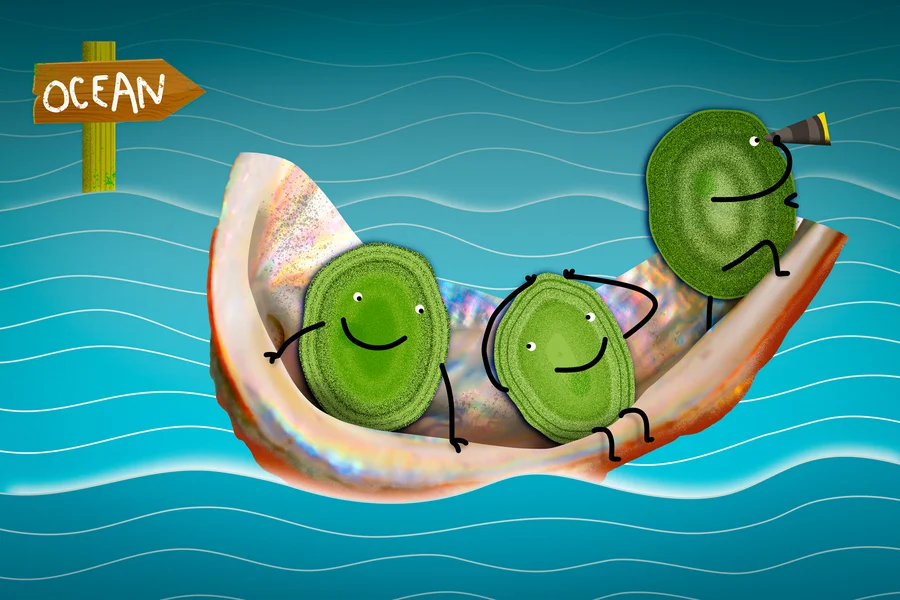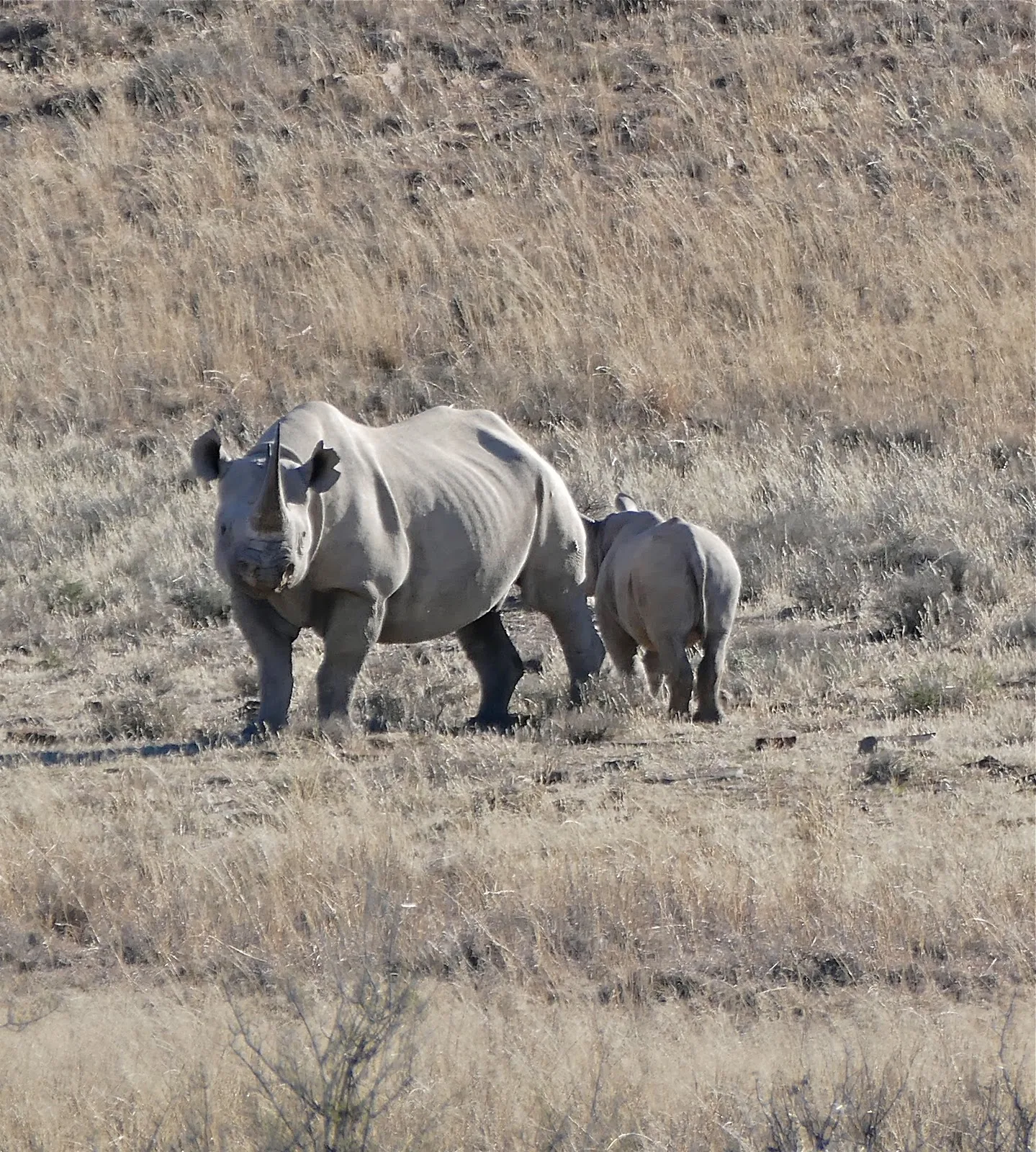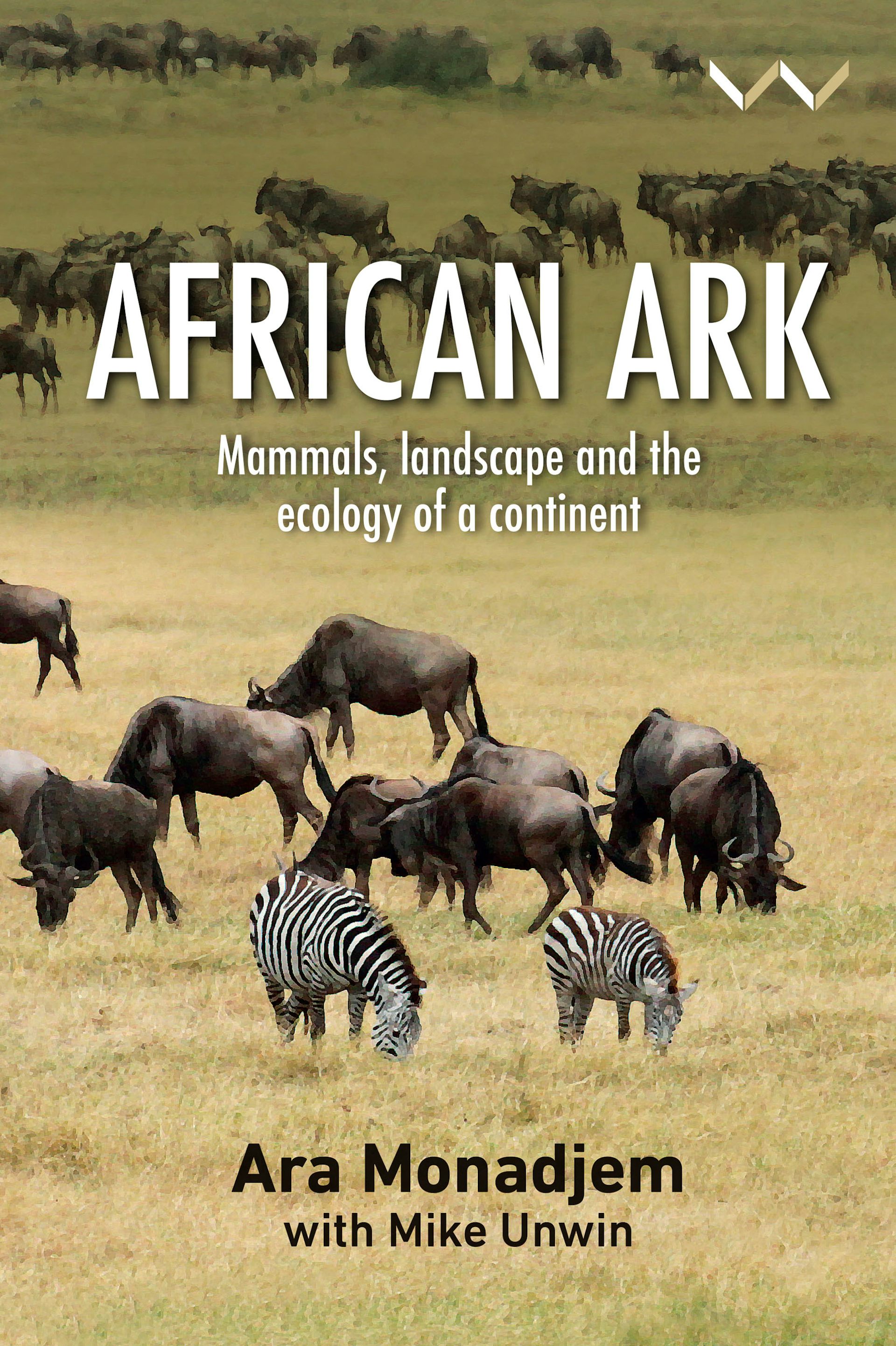Joro spiders aren’t scary. They’re shy.
A rather beautiful large spider is rapidly spreading across the southern USA, aided by a couple of attributes that enable it to adapt to human habitation, in a stunning example of how the environment can select for species fitted to live and thrive in it. A related species, T. clavipes, has already established itself in southern USA.
The spider, Trichonephila clavata, is a very large, but harmless (to humans), Jorō spider, the subject of a recent research paper in the journal Arthropoda. The research, carried out by researchers, by Andrew K. Davis and Amitesh V. Anerao of Odum School of Ecology, University of Georgia, Athens, GA, USA.
The study shows that, in a classic example of how particular traits can enable a species to extend its range, T. clavata is good at living alongside humans. Rather than being aggressive, which most people would assume is the reason it is out-competing native American spiders, T. clavate is particularly shy and non-aggressive. Despite their size and warning colouration, they are harmless to humans and pets. They will only attempt to bite if picked up and trapped and even then, their fangs aren't large enough to pierce human skin.
Interestingly, their avoidance strategy is to remain completely motionless for about an hour when disturbed, unlike most spiders which normally resume activity after few minutes, leading the researchers to classify them as 'shy' rather than aggressive.
The research is explained in a University of Georgia press release:
New study suggests the massive spiders are gentle giants, mean people no harm
Despite their intimidating appearance, the giant yellow and blue-black spiders spreading across the Southeastern U.S. owe their survival to a surprising trait: They’re rather timid.One of the ways that people think this spider could be affecting other species is that it’s aggressive and out-competing all the other native spiders, so we wanted to get to know the personality of these spiders and see if they’re capable of being that aggressive. It turns out they’re not.
They basically shut down and wait for the disturbance to go away. Our paper shows that these spiders are really more afraid of you than the reverse.
One thing this paper tells me is that the Joros’ rapid spread must be because of their incredible reproductive potential,” Davis said. “They’re simply outbreeding everybody else. It’s not because they’re displacing native spiders or kicking them out of their own webs.
Dr. Andrew Davis, lead author Odum School of Ecology, University of Georgia, Athens, GA, USA.
According to a new study from the University of Georgia, the Jorō (Joro) spider may be the shyest spider ever documented.
The researchers compared more than 450 spiders’ responses to a brief and harmless disturbance across 10 different species.
While most spiders froze for less than a minute before resuming their normal activities, the Joro spiders remained motionless for more than an hour.
In fact, Joros are relatively harmless to people and pets. Joros won’t bite unless cornered. And even if you did manage to somehow annoy a Joro into biting you, its fangs likely wouldn’t be large enough to pierce your skin.
A female Joro spider spins its web. The 30mm scale bar is included for size reference.Credit: Jeremy Howell
Most spiders begin moving quickly after stress, Joros remain immobile for 60-plus minutes
To examine the spiders’ reaction to stress, the researchers used a turkey baster to gently blow two rapid puffs of air onto individual spiders. This minor disturbance causes the spiders to “freeze” for a period of time, going absolutely still.
The researchers tested more than 30 garden spiders, banded garden spiders and marbled orb weavers. They also analyzed similar data from previously published, peer-reviewed papers that assessed the response of 389 more spiders, comprising five additional species.
All of those spiders began moving again after an average of about a minute and half of stillness.
The Joros, however, stayed frozen with no body or leg movement for over an hour in most cases.
The only other spider species that exhibited a similarly extended response was the Joro spider’s cousin, the golden silk spider. Known as Trichonephila clavipes, the golden silk spider and the Joro spider are from the same genus.
Joros may be invasive, but they’re not aggressive
Officially known as Trichonephila clavata, the East Asian Joro spider first arrived in Georgia around 2013. The species is native to Japan, Korea, Taiwan and China, and likely hitched a ride stateside on a shipping container.Most people think ‘invasive’ and ‘aggressive’ are synonymous. People were freaking out about the Joro spiders at first, but maybe this paper can help calm people down.
They’re so good at living with humans that they’re probably not going away anytime soon.
Amitesh Anerao, co-author of the study,
Undergraduate researcher, Georgia University, Athens, GA, USA
The species has since rapidly spread across the state and much of the Southeast. Joro spiders easily number in the millions now. And there’s not much we can do to stop them from increasing their range.
Davis’ previous research even suggested the invasive arachnids could spread beyond their current habitats and through most of the Eastern Seaboard.
Joro spiders built to withstand human activity
Joros are regularly spotted in areas native Georgia spiders don’t typically inhabit.
They build their golden webs between powerlines, on top of stoplights and even above the pumps at local gas stations—none of which are particularly peaceful spots.
The researchers believe the Joro spiders’ shyness may help them better endure the barrage of noise, vibrations and visual stimuli they consistently encounter in urban settings. Their prolonged freeze response to being startled could help conserve the Joro spiders’ energy.
If you’re wondering how something so mild-mannered could spread the way Joro spiders have, you aren’t the only one.
Arachnophobes can take solace in the Joro spiders’ meek and gentle temperament. But the spiders are likely here to stay.
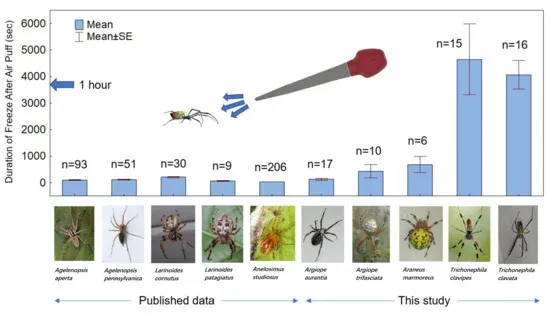
AbstractA classic study showing how traits can facilitate the spread of a species into new territories provided the local environment provides the right selectors, if not, of course, introduction won't succeed. And once again confirming the relationship between a species and its environment and how the latter selects for traits which produce more copies than other alleles.
The jorō spider (Trichonephila clavata, originally from east Asia) has been introduced in the southeastern United States, and is rapidly expanding this range, leading to questions about what facilitates this spread. Meanwhile, its cousin, the golden silk spider (T. clavipes), already has a range that covers most of the southeast. In an ongoing effort to understand the behavior of jorō spiders in their introduced range, we undertook the current project to evaluate how they react to perceived threats, which can inform us on how a species interacts with conspecifics, or how well it can tolerate anthropogenic disturbances. We collected mature females of both Trichonephila species, plus three locally common orb-weaving species in Georgia, and we evaluated the time spent immobile after experiencing a mild disturbance (a brief puff of air). We also collected similar “air puff response” data for five other North American species from the published literature. Collectively, the dataset totaled 453 observations of freezing behavior across 10 spider species. Comparing these data across species revealed that most spiders remained immobile for under a minute after the stimulus. Meanwhile, both Trichonephila spiders remained immobile for over an hour, which appears to be unprecedented, and suggests that spiders in this genus are the “shyest” ever documented. This reaction could also allow Trichonephila spiders to tolerate urban environments by remaining motionless throughout each disturbance instead of fleeing.
Davis AK, Anerao AV.
Startle Responses of Jorō Spiders (Trichonephila clavata) to Artificial Disturbance.
Arthropoda. 2023; 1(2):60-67. https://doi.org/10.3390/arthropoda1020009
Copyright: © 2023 The authors.
Published by MDPI (Basel, Switzerland). Open access
Reprinted under a Creative Commons Attribution 4.0 International license (CC BY 4.0)
All perfectly understandable in terms of natural processes, with not a hint that supernatural magic had to be involved at some point.
And yet creationism is still managing to recruit new scientifically illiterate fools into the cult, despite all its counter-factual claims and readily available evidence refuting them.
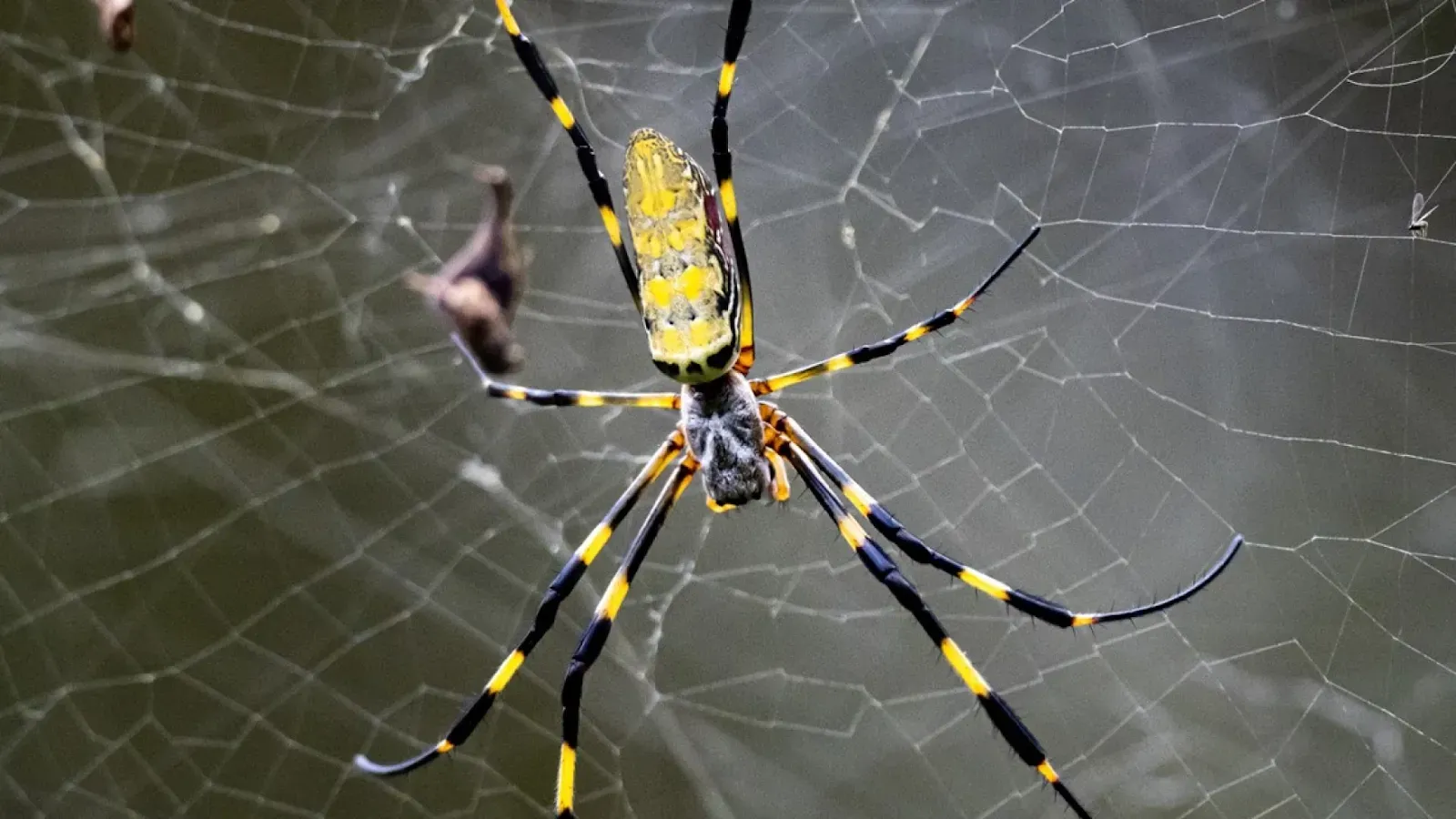.webp)









